#Spiderday - Tarantula Shopping
Here are some tarantulas from various pet stores for this #spiderday

Check out this expensive purple bloom bird eater. Her Latin name is Pamphobeteus platyomma this one's coloring makes her super expensive I believe she was listed at over $380 at the animal show I went to. This gal was also huge, as big as your hand, not quite as big as a goliath bird eater but close to that size.
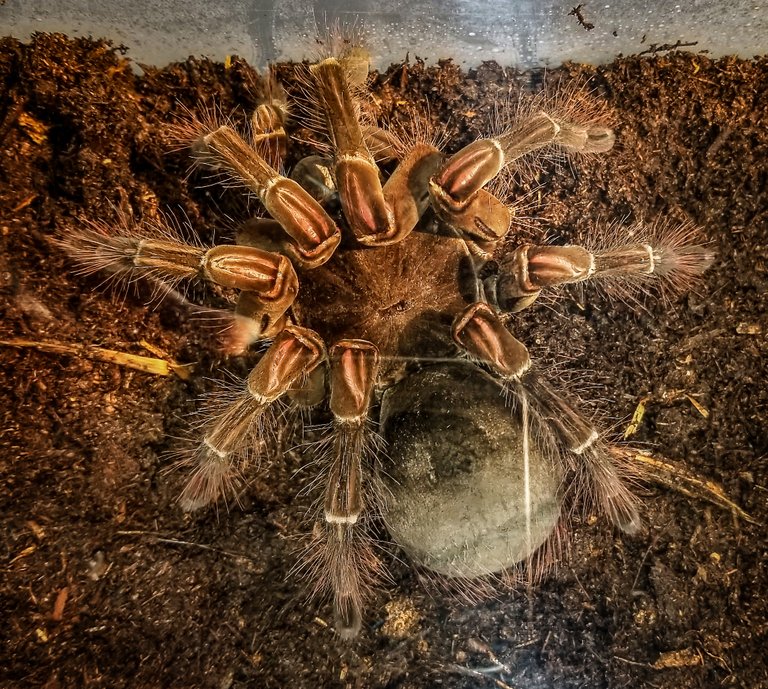
In contrast here is one of the largest spiders you can buy or that even exists in the world. This is a goliath bird eater Theraphosa blondi.
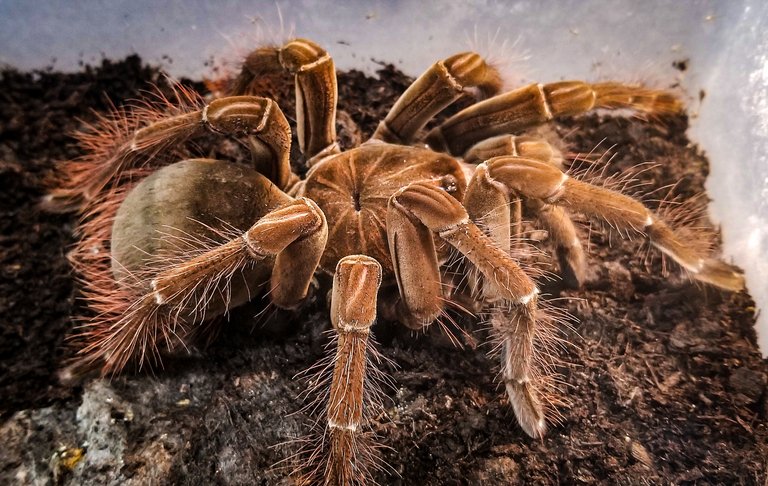
They are large enough to eat birds but are too slow to really catch any birds, they will eat rodents easily though.
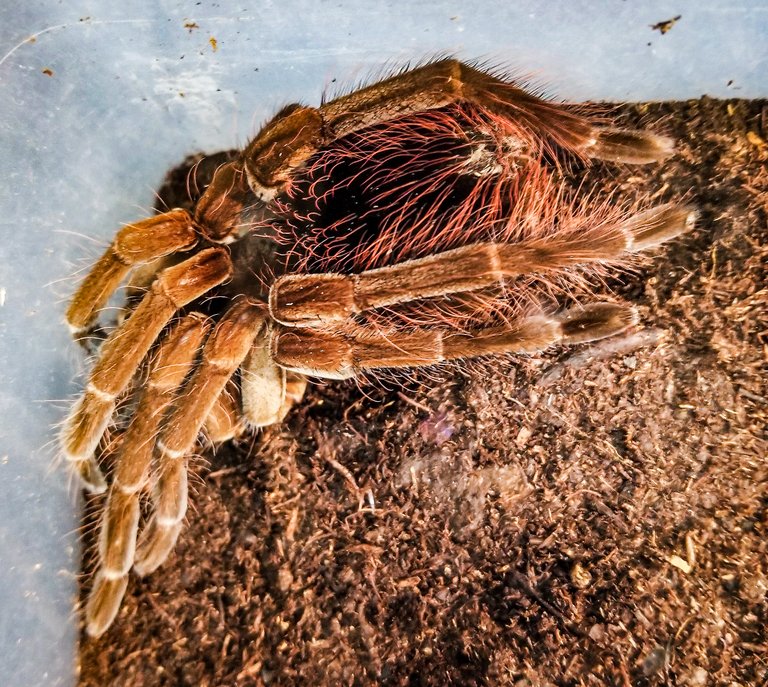
These spiders are native to South America in the Brazil Argentina area.
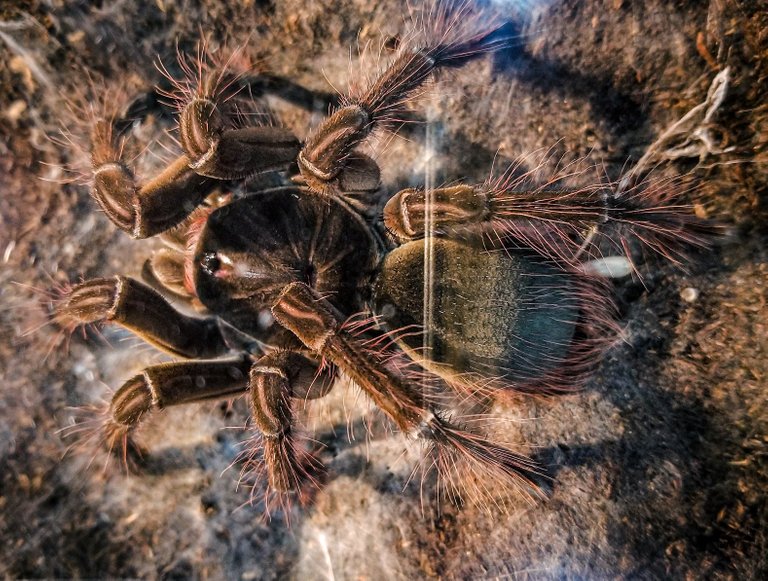
Some people in South America even eat them because they are so large. They roast them in banana leaves and once cooked they are said to have a shrimp-like flavor. I would probably never eat one but I do want to get one as a pet one day. They live up to 25 years so be ready for a long-term pet if you ever get one.
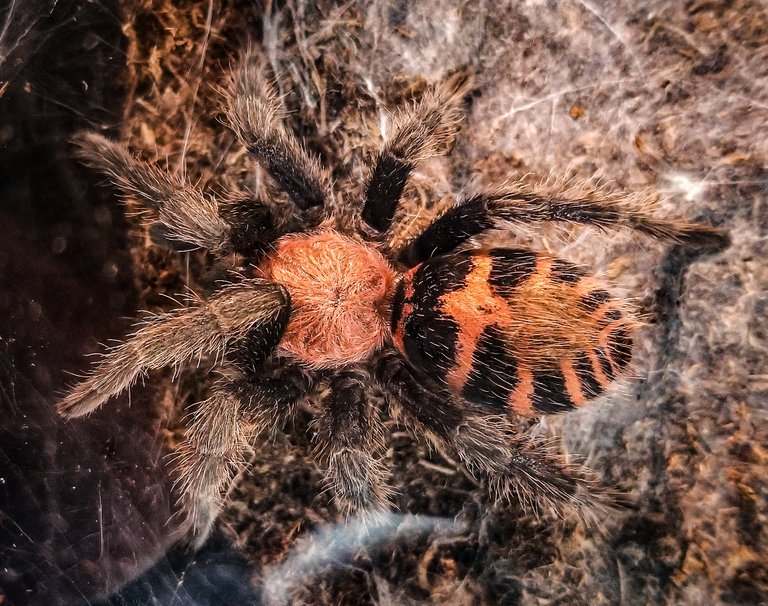
Now for a tiny little dwarf tarantula. This one is barely larger than a wolf spider and is called Trinidad Tiger Dwarf Tarantula aka Cyriocosmus elegans. They can be handled easily and are docile and will fit in the palm of your hand as they stay tiny. The coloring is quite bright and interesting making them a bit of an expensive spider to buy, this one was listed at $190.
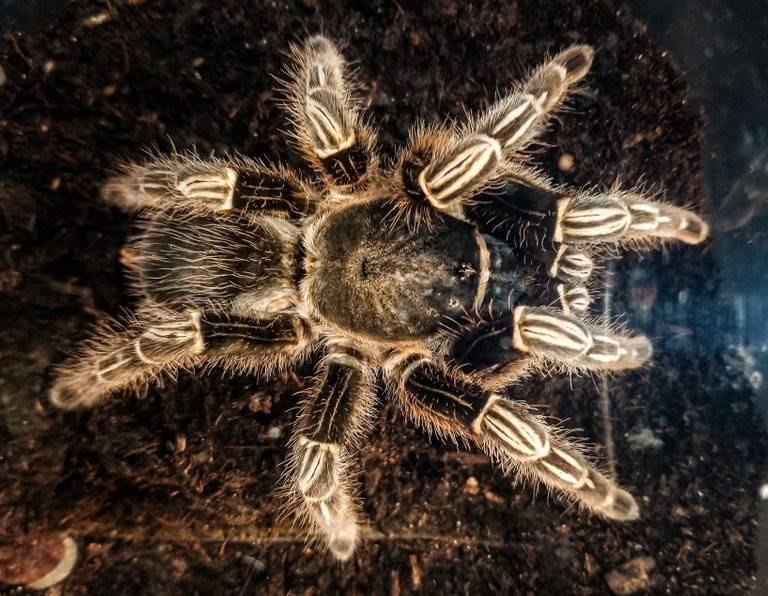
Here is a skeleton knee spider. They have a few different color morphs so I'm not sure what this one is. I like its stark black and white coloring to accent its skeleton pattern on the legs.
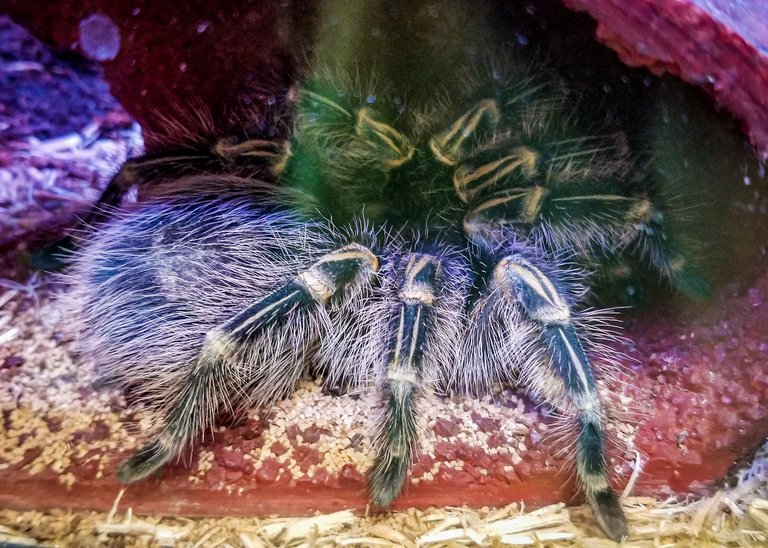
I suspect this one is Ephebopus murinus commonly called skeleton tarantula. All the skeleton tarantulas are from South America and have typical features of tarantulas from this area (i.e. they make burrows). Notice how hairy they are, this indicates they can be tamed down to be handled. Hairy species of tarantulas are able to differentiate prey from predators and things they can't eat so they won't bite everything that gets into their area (like my short haired cobalt blue tarantula).
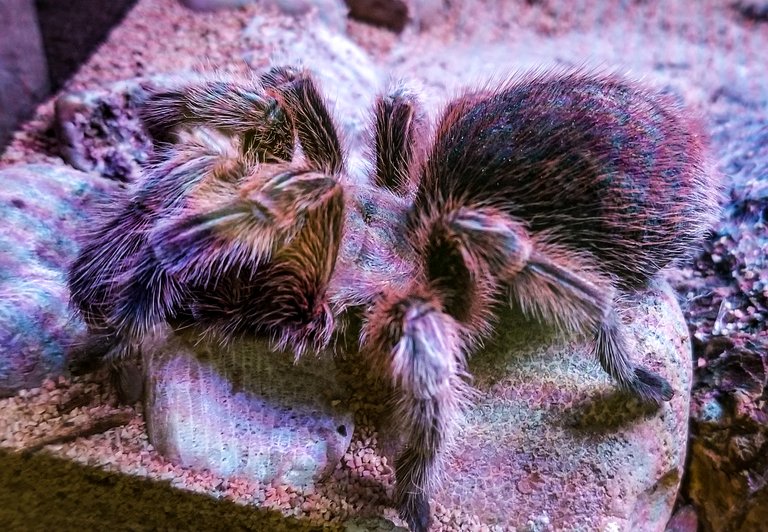
Here is a really large Chilean Rose Tarantula (Grammostola rosea), I already have one as a pet but not nearly as large as this one. This one is almost as big as a bird eater, hopefully mine will get this large one day. Who knows if there are subtle morphs within Chilean Rose Tarantulas that make some larger than others...
That's all for now happy #spiderday
amazing is it dangerous
All these species are not that dangerous as they aren't aggressive. Their venom isn't deadly either.
I've never seen a tarantula that can eat birds, looks I don't want to touch them.
These big bird eaters can be handled, and they are very docile compared to most spiders.
God, they are so cute. 😍
I really want to get the Trinidad Tiger Dwarf, such a tiny version of a tarantula.
it's really spectacular,, I'm very fascinated to see it, this time I lost 5-0 to you,, hehehe...
Keep an eye out for the arboreal tree tarantulas over there. You should have quite a few out in the jungle over there.
I've always been watching him, but I've never found him
They can be quite camouflage and high up in the trees, I wonder if there is some sort of time they come out at night.
They're beautiful, but if I met one up close and personal, I would definitely freak out and run! Lol...
They are very slow moving, it would be easy to just slowly step away lol.
They have beautiful little fur, it's very captivating us to see it both in terms of fur or also in terms of color.
There are so many different colors of tarantulas out there probably some undiscovered species out there deep in the jungles as well.
does the chairman also want to look for him.
This lady found many https://indianexpress.com/article/trending/bizarre/meet-queen-tarantula-an-indonesian-woman-who-lives-with-1500-pet-spiders-4635771/
it's very good chairman i have seen it
That's a very unique spider I have ever seen, you are very good at taking pictures.
These ones were easy to get photos of since they were in their enclosures.
Are you looking for it on purpose?
Looks like the spider is not venomous is it true brother. ?
It is venomous but not a deadly venom. So the bite will hurt but won't kill you.
Oh that's true, but still spider venom makes our body feverish, because one of my friends was bitten by a spider but I don't know what kind of spider bit him but still my friend had to be hospitalized.
That's why I'm very careful when photographing spiders now. afraid to happen like my friend. :))
Tarantula venom is more mild because they are large spiders that can overpower their prey. Smaller spiders need more potent venom to get their prey. I wonder if your friend's bite got infected later on and that's what caused the fever.
he was not infected, after a few hours he immediately had a fever.
Interesting I wonder what type of venom it was. How long did the symptoms last? What was the treatment for it?
I'm not sure about the poison he's in. but he was hospitalized for a few days and now he is healthy again.
Here there is a spider called the brown recluse that will cause a fever after being bitten, then the bite turns into necrotic flesh if it isn't treated quickly leaving a big open pit scar where the bite happened. But if treated fast enough within a couple days they will actually use a stun gun on the bite to stop the necrotoxin from spreading.
hff... that sounds really scary , do you have a photo of that spider if i see can be careful
There are a few with that same venom it is often called the fiddle spider because it has the shape of a violin on its face. https://en.wikipedia.org/wiki/Brown_recluse_spider
thank you very much for the information bro
at that time my friend said the spider that bit him was a little yellow
The yellow sac web spider has the same venom but it bites in a smaller amount. The yellow sac webs tend to go where its warm under the bed sheets and when you move that's when they bite. https://animalcorner.org/animals/yellow-sac-spider/
for treatment only handled by hospital nurses. It's a shame I forgot to ask that day about the medication he was taking.
I think it looks like it's just a simple drug. but whether there is a special drug, I don't know either
The purple bloom bird eater is beautiful. The skeleton knee spider looks like an edit. The contrast is so dramatic. Like an x-ray. These are much more exciting than the plain old black tartulas I remember in Texas.
I wonder if the skeleton knee has some kind of grassy environment it likes to hide in? Or maybe it will confuse a potential predator with such a bold pattern sort of like zebra stripes. I wasn't prepared to spend over $300 on a purple bloom bird eater lol.
Yay! 🤗
Your content has been boosted with Ecency Points, by @anzirpasai.
Use Ecency daily to boost your growth on platform!
Support Ecency
Vote for new Proposal
Delegate HP and earn more
Thanks @anzirpasai :-)
Wonderful spiders, but the markings on the first one are stunning!
That first one is super rare and the best of the best of coloring from that species. I wonder if they had to breed pedigree tarantulas to get that color lol.
Awesome shots! Yeah, some Ts are ridiculously expensive. But oh, so beautiful. I think that last pic is of the Lasiodora sp. birdeaters, among the largest of Ts as well. Some species can look like Chilean Roses and can be confused for them, except for their size. I have 3 Salmon Pinks juveniles I'm raising now. They get about as large as a plate.
Eventually I want to get a bird eater, just which color to get? A salmon pink to match my Chilean rose or one of those fancy burst ones that are crazy expensive lol.